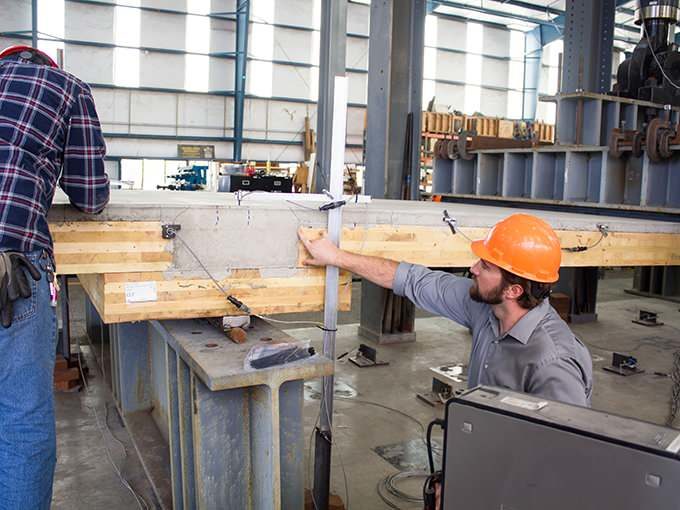
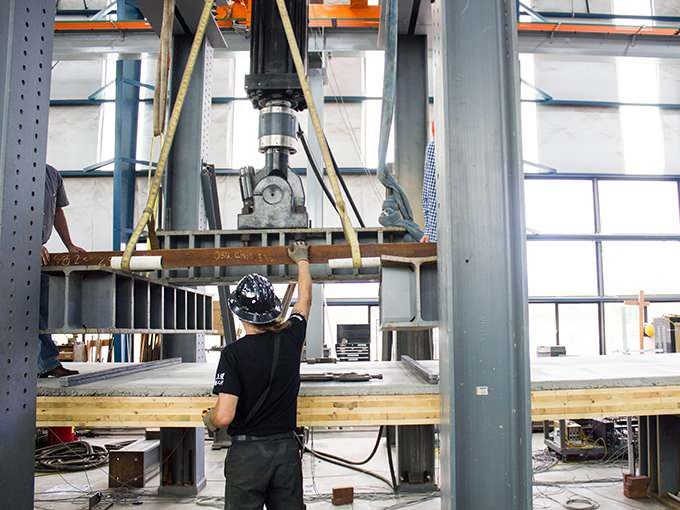
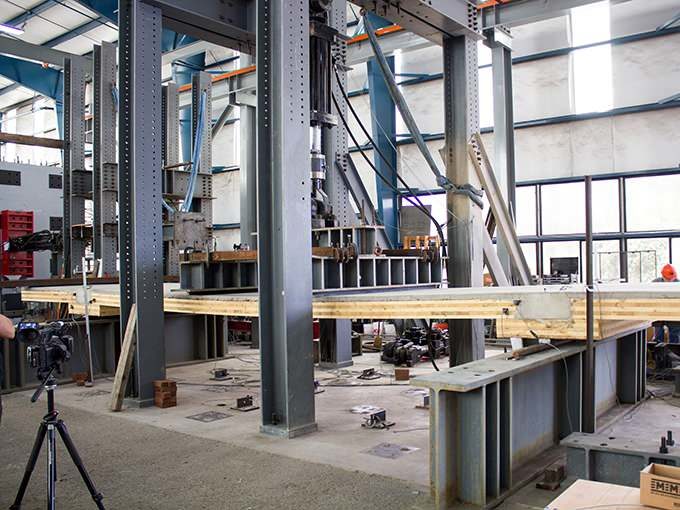
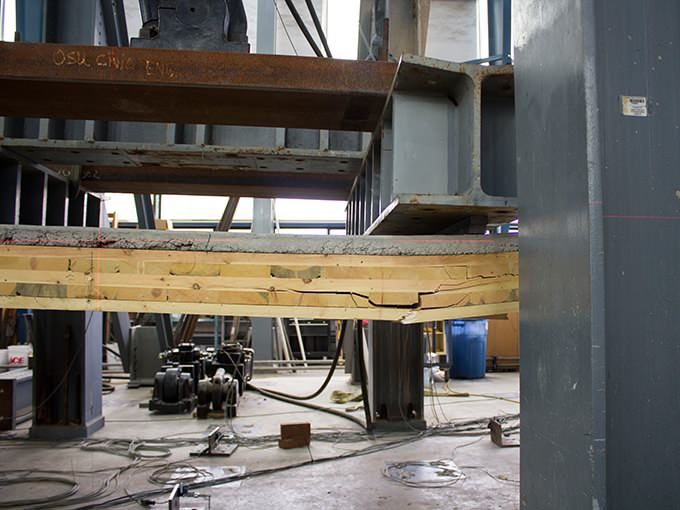
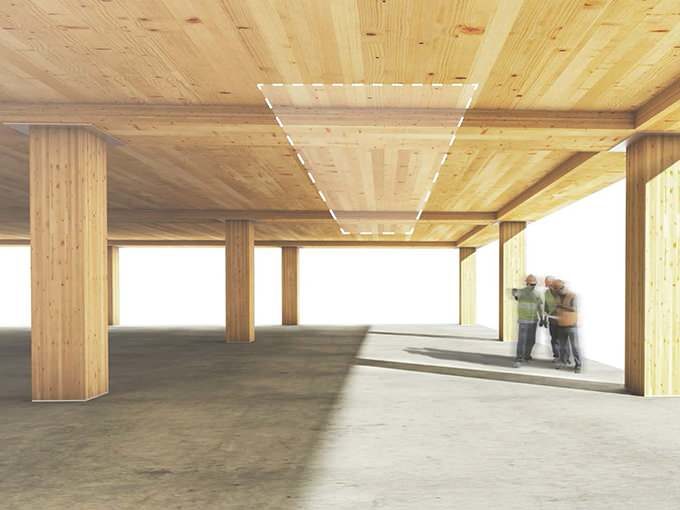
Developing sustainably constructed buildings is an urgent concern as cities look to decrease their ecological footprint. Skidmore, Owings & Merrill LLP (SOM) sought to address this issue by exploring the potential of mass timber to reduce the embodied carbon footprint of high-rise buildings. The Timber Tower Research Project, funded by the Softwood Lumber Board (SLB) and launched in 2013, examined solutions that could utilize mass timber as the main structural material to reduce the embodied carbon footprint of buildings by 60 to 75 percent compared to a benchmark concrete building. The research team proposed a structural system called the Concrete Jointed Timber Frame, a system which employs mass timber for main structural elements and reinforced concrete for connections. This approach was further developed in a second report in 2014 that focused on gravity framing systems and recommended a physical testing program.
To advance the findings of the research initiative, SOM and Oregon State University (OSU), with support from the Softwood Lumber Board, developed a comprehensive physical testing program that, to date, has included nearly 20 tests of varying sizes and configurations. On August 8th, the successful test of the final full-scale specimen provided strong evidence that the timber-concrete composite system can satisfy code requirements and compete with traditional construction methods.
The tested floor specimen—36 feet long by 8 feet wide—was modeled on a portion of a typical structural bay. The tested element was a Cross-Laminated Timber (CLT) deck topped with a thin layer of reinforced concrete to enhance the structural, acoustic, and fire performance of the system. The two materials were joined and made composite with connectors specifically designed for this application. The reinforced concrete topping slab was thickened at the supporting CLT beam to form a rigid connection between CLT decks, a feature which allows floors to span between beams with a relatively thin cross-section. For the test, the specimen was loaded with a hydraulic actuator and was recorded by 48 different sensors over the course of two hours.
The floor system provided greater stiffness than required by code and supported an ultimate load of 82,000 pounds—approximately eight times the required design load. The initial results are promising and will serve as the basis for verification testing—a series of tests that will address issues such as fire resistance—which will be required before the system can be used in high-rise buildings.
SOM Associate Benton Johnson remarked that the successful test “highlights the real benefits of the composite timber approach. We took a small amount of concrete that was necessary for acoustic and fire performance and used it to enhance the structural performance of the floor. This move allows mass timber to reach its full potential, allowing it to compete in the market while also reducing the carbon footprint of cities.”
About Skidmore, Owings & Merrill LLP
Skidmore, Owings & Merrill LLP (SOM) is one of the leading architecture, interior design, engineering, and urban planning firms in the world, with an 80-year reputation for design excellence and a portfolio that includes some of the most important architectural accomplishments of the 20th and 21st centuries. Since its inception, SOM has been a leader in the research and development of specialized technologies, new processes and innovative ideas, many of which have had a palpable and lasting impact on the design profession and the physical environment. The firm’s longstanding leadership in design and building technology has been honored with nearly 2,000 awards for quality, innovation, and management. The American Institute of Architects has recognized SOM twice with its highest honor, the Architecture Firm Award—in 1962 and again in 1996. The firm maintains offices in New York, Chicago, San Francisco, Los Angeles, Washington, D.C., London, Hong Kong, Shanghai, Mumbai, and Abu Dhabi.